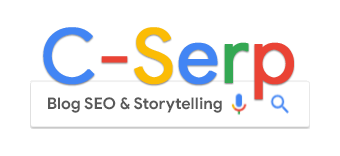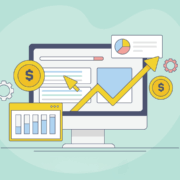Dynamic landing pages: What works, what fails, and how to test

Most PPC marketers still default to static landing pages, whether it’s one catch-all page or a growing library of customized versions.
You might already have dozens of static pages built for different campaigns, audiences, and offers. This is a proven approach:
- Create a page.
- Personalize it.
- Launch it.
- Optimize it.
- Repeat.
The question isn’t whether to customize – it’s whether managing 60 static pages is more effective than running 12 dynamic ones that adapt in real time.
Dynamic landing pages offer a different solution by adapting headlines, calls to action, visuals, and offers based on signals from the campaign itself.
In theory, this lets you align your post-click experience with the user’s context without building a new page for every scenario.
In practice, results are mixed.
Here’s where dynamic landing pages succeed, where they fail, and how to determine if they’re right for your strategy.
Why dynamic landing pages work (when done right)
Matching experience to intent
When a user’s search aligns with what they see after the click, performance usually improves. That’s not guesswork but data-backed.
Fellow Search Engine Land contributor Jason Tabeling‘s research found that above-average landing page experience and ad relevance convert up to 750% better than those below average.
That’s a massive performance gap, and it starts with relevance.
Dynamic landing pages allow you to align the content with the user’s intent, device, and audience signals.
Don’t just swap out words. Rethink the messaging and visuals, and ask based on where the user is in the funnel.
Adapting the CTA to the moment
What you ask of the user should reflect where they are in their journey.
If someone clicks on a general query like “how this software works,” sending them straight to a sales form may be premature.
A better match might be a case study, feature breakdown, or low-commitment download.
At the other end of the spectrum, someone who searches “[Your Brand] vs Competitor” likely already has buying intent.
They may be ready for pricing or a direct call to action.
Dynamic pages make it possible to serve different conversion paths based on how the user arrived without needing dozens of separate static pages.
Quality score gains without raising spend
Landing page experience directly affects quality score, which in turn impacts CPC and ad rank.
In other words, a better page can lower your cost while increasing exposure.
Landing page experience contributes to how Google scores your ads and is one of the easiest ways to increase impression share and lower costs.
Dynamic content that aligns with search intent can create those efficiency gains when properly executed.
Dig deeper: 5 tips for creating a high-converting PPC landing page
Where dynamic pages can break down
Implementation is more complex than it looks
There’s no turnkey solution to dynamic landing pages for Google Ad campaigns.
Implementing dynamic landing pages can be difficult because they typically require:
- Third-party platforms (like Unbounce or VWO).
- Conditional content rules.
- URL parameter parsing.
- Modular content structures.
- QA workflows across devices and user types.
This setup demands cross-functional collaboration between marketing, development, and analytics teams.
Without a strong system in place, dynamic elements can glitch, display irrelevant content, or fail to load altogether.
When these failures happen, you risk losing visitors and credibility fast.
The complexity alone can be enough to intimidate teams from trying the approach altogether.
Tracking must be clean
If your UTM structure is inconsistent or your tagging is unreliable, dynamic content won’t know what to serve.
And once the user hits the wrong version of a page, you’ve lost the personalization advantage.
Google’s systems can penalize low-quality variants
There’s a belief that as long as the page “feels” personalized, you’re in the clear. Google’s ad quality systems are more sophisticated than that.
Google has started incorporating on-site behavior and navigation patterns into its landing page scoring.
That means thin content, keyword stuffing, or auto-swapped text blocks might actually lower your quality score even if you’re personalizing.
The consequences can be severe.
Google may label your landing page as “Below average,” which can tank your ad serving, increase your costs, and ultimately hurt your campaign performance.
It’s not enough to personalize. The page must also be cohesive, functional, and easy to navigate.
Dig deeper: New Google Ads prediction model scores landing page navigation
You’ll need a lot more creative than you think
Every variation you want to personalize requires supporting creative:
- Headlines.
- Hero sections.
- Imagery.
- Calls to action.
- Supporting copy.
That quickly adds up.
If you don’t have a scalable content system or if your CMS doesn’t support modularity, this can turn into a bottleneck that stalls launches and compromises UX.
How to test without overcommitting
Start lean. You don’t need a personalization engine to experiment with dynamic content.
- Select a high-intent campaign with reliable traffic.
- Use URL parameters to segment by device, campaign, or query type.
- Swap just one element: headline, CTA, or image.
- Measure bounce rate, time on page, and conversion rate.
- Expand only after you prove a true performance boost.
You don’t need 50 versions to get value. You just need a strong hypothesis and a clear testing framework.
Final thoughts
Dynamic landing pages aren’t the perfect method for everyone.
However, they’re another strategy tool that can help align the post-click experience with the pre-click intent.
Dynamic pages can improve campaign performance and decrease cost-per-acquisition if you’ve got the right team setup to support this, such as:
- Developers who can build or implement them.
- Creative assets.
- Campaigns with tracking set up correctly.
If you don’t, static pages may still work, but the gap between relevance and generic experience will only widen.
Team resources will be spent constantly creating individual pages to achieve the same level of personalization.
It’s more time, more resources, and more management overhead.
What you do after the click matters just as much as what gets the click.
In 2025, the brands that dominate will not just be the ones with the best ads.
They’ll also have landing pages smart enough to continue the conversation after the ads.


